Let me preface this by saying that when we went to London, we were determined not to be "those Americans" who ate at McDonald's.
But in the Chicago airport on Sunday, Elizabeth said, "You know, I'd actually be curious to see what a Chinese McDonald's is like." An hour later, we were standing in line to get our passports and visas checked and started a conversation with the man behind us.
As it happened, Kelvin is an executive with McDonald's and was on his way to meet up with his team in China. He told us that within 10 years, China will surpass the United States as McDonald's largest market. It already has something like 1,400 stores in seven cities. China Daily published an article just last year about McDonald's astounding expansion goal of more than 225 stores per year. And advertising has become more aggressive, as this writer from the China Expat blog observed.
Still, it's second to Kentucky Fried Chicken, the flagship brand of the Louisville-based Yum! Corp. Several news organizations have written about KFC's domination of the Chinese markets.
But here's where it gets interesting. Kelvin told us that one of the reasons McDonald's was slow to get a foothold in China was that it spent four years setting up a supply-chain infrastructure. For instance, there were no potato farms in China before McDonald's arrived in 1990. Imagine that -- no fries with that. Beef also wasn't big. So McDonald's essentially had to help launch a beef cattle industry in China. It also set up its own supply chain for chicken using farming standards of the U.S. poultry industry.
Thus, when China was hit with an outbreak of bird flu, McDonald's didn't lose a step, Kelvin said. KFC, however, has relied on a traditional network of chicken suppliers and the restaurant chain has taken quite a hit, as the Associated Press reported.
Kelvin also told us that the menu was essentially the same as American fare but with some regional specialties. That sealed it for us. So for lunch on Tuesday, we found the McDonald's at the Wangfujing shopping area.
Ordering was the toughest part. The cashier was not impressed with my rudimentary Mandarin, so she bailed me out with her rudimentary English and got our orders largely correct: a chicken sandwich meal for Elizabeth and a rice patty and chicken wrap (one of those regional specialties) for me. I say "largely correct" because we were each given Cokes without a choice.
Oh, and that wrap? It's the best thing I've ever eaten at McDonald's.
-Ryan
2 Comments
Ryan is always navigator-in-chief in our household, but he outdid himself Tuesday on our first day in Beijing. He got us all three places we wanted to go with only a few hiccups. Kate had warned us about a few basic travel quirks before we arrived: 1. Maps aren't really to scale. To get around this, Ryan sketched out his own maps in a Moleskine journal (he wisely agreed that it was best not to bring any reporter notebooks with him this time). 2. Traffic laws are either non-existent or not enforced. Therefore, Kate advised us to cross the streets with extreme caution and with large groups whenever possible. Trusting the crosswalk signs is more of a suggestion you can try after all the turning cars and bikes have passed. At one point, we had to jump out of the way after a car turned onto the sidewalk where we were walking. Even with Kate's warning, we were shocked by how truly terrible it is. Unsurprisingly, we found this fact in a Washington Post story: 220,000 traffic fatalities every year in China with a third as many cars as the United States. We can add a No. 3 to this list - the subway is pretty easy to use as a foreigner. Not that we were without any problems: The in-service subway ticket machine didn't work in either station we tried and there are metal detectors that bags must pass through before entering the station. But signs and announcements were done in English as well as Mandarin, and the non-working ticket machines even had an English option. It was much more accessible to foreigners than the subway in Paris. If you don't speak French in Paris, they don't really seem to care if you find your destination OK. Faithful readers, i.e. our parents, may notice that the horrid green raincoat has been replaced with a nice black one this year. Unfortunately it wasn't purely a fashion choice; it rained most of the day Tuesday.
-Elizabeth To shake off the jetlag and get acclimated to Beijing, Elizabeth and I spent our first full day in China seeking enlightenment and knowledge at two of the oldest and most important temples in the city. The Lama Temple is the oldest and best-preserved Buddhist temple in Beijing. It's ornate. Gilded Buddha statues of all sizes can be found in the various palaces, halls and pavilions. None is more impressive than the three-story high Buddha Maitreya (the incarnation of Buddha on earth) carved out of a single piece of sandalwood and decorated in gold. No photos were allowed in that area. Strangely, neither the audio tour nor the signs throughout the temple mentioned that in the past, foreigners would disappear when visiting the temple, which was out of bounds for most Beijing residents. Those disappearances, according to National Geographic, fueled rumors of human sacrifices. Incense and Sensibility -- Buddhist monks still worship at the temple from 5 a.m. to 7 a.m. Even during public hours, scores of people were paying homage to Buddha by bringing offerings of fruit and burning incense outside the various palaces and halls. In fact, the whole experience smelled very much like my freshman year in college. Duck for luck -- Like any tourist/pilgrim destination, the Lama Temple had a number of offering stations where people could donate money. One was a cylindrical metal cage in which people tried to toss coins in the top for luck. Here's a broad generalization: Chinese people have bad aim. Either that, or the Buddhists have employed an invisible Anthony Davis to block the shots. No one we saw could get a coin in. And because there was no back stop and it was in the round, people on the opposite side of the tosser would get pelted. At one point I took a jiao (which is like a dime) to the shoulder. Down the street from the Lama Temple is the Confucius Temple and the Imperial College where aspiring government officials went to study for centuries. To our untrained eyes, the architecture and ornaments on the Confucius Temple buildings looked suspiciously similar to the Lama Temple. We did not ask for our money back. The temple featured lots of stone tablets. One calligrapher spent 12 years carving 630,000 Chinese characters into more than 100 such stone tablets that looked like oversized grave stones. In fact, walking through that building offered what I imagine would be a rabbit-eye view of a cemetery. Confucius himself was much more interesting to me now than he was during 10th grade social studies. Born in 551 B.C. to an aristocratic family that hit hard times, Confucius went from being a music loving clerk to starting his own private school -- something that was unheard of for a non-government official. Among his lessons that should still apply (and are still being ignored) today:
Confucius also has a sense of humor. Here he is photo bombing us. -Ryan
We're planning our third annual travel blog this summer, though we've gone a little farther afield this time around. In fact, a 13-hour plane ride farther afield. This year, we're visiting China.
Ryan's sister Kate accepted an international post in Xi'an last year and moved over here in the fall. After somewhat getting the hang of international traveling in the U.K., we decided to take advantage of a unique opportunity to visit China, spend time with her and see how life goes as an ex-pat. We'll be sightseeing in both Beijing and Xi'an during the next 10 days. Ryan has armed himself with five phrases in Mandarin that he swears will get us through. Stay tuned and find out. 
Me right after landing in the Beijing airport, incredibly happy to have survived the 13-hour flight from Chicago in Economy class. At one point I realized we still had eight hours to go, which was still an entire workday. I took three naps, watched two in-flight movies and a couple of TV episodes, and read more than half of a new mystery novel.
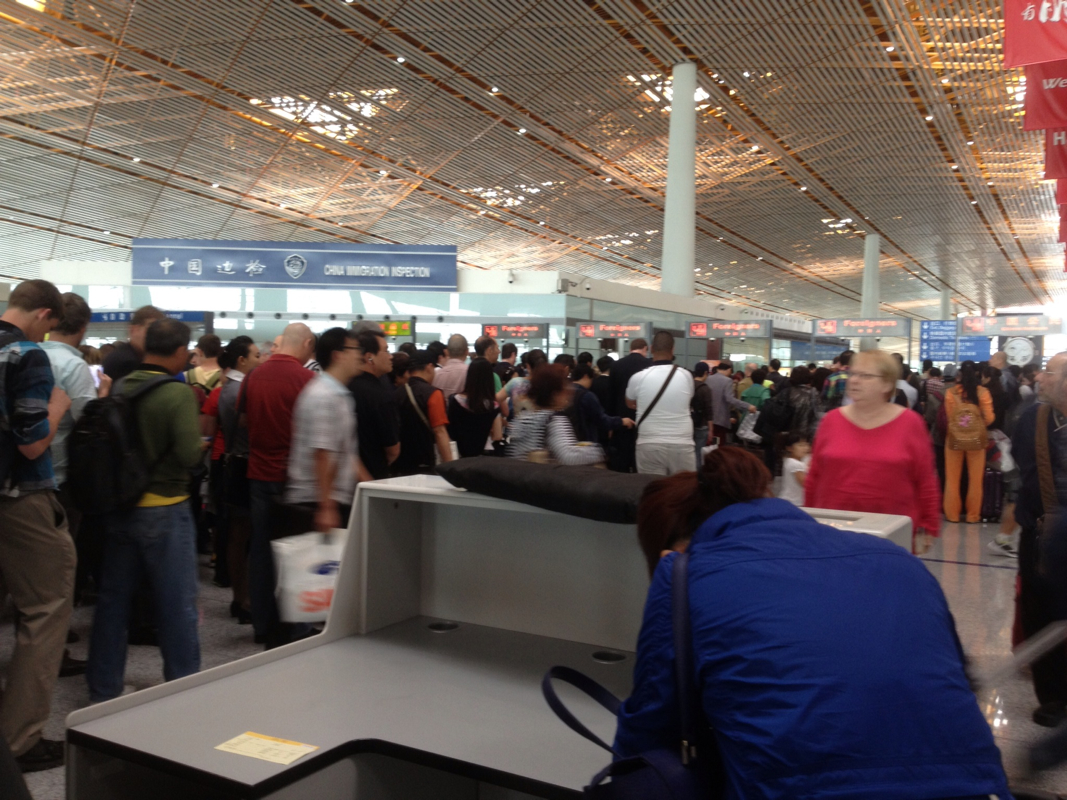
The line in the Beijing airport to get approved for entry into the country. It took us more than an hour to get through and they scrutinized the passport photos closely. I had to take off my glasses before our agent would consider approving me, so I guess it was a good thing I hadn't done anything too crazy with my hair color lately.
This is the travel blog we'll use for summer 2013 in place of the Google-based one we've had the past two years.
While Ryan's sister says that Google is available in China at the moment, the government has blocked it unexpectedly in the past for various reasons. When we return, we'll migrate all of our posts from this site to the old one, since that's the blog of permanent record. If you are new to our blog, the name is taken from one of our favorite movies, Shaun of the Dead, and was started for our trip to London in 2011. |
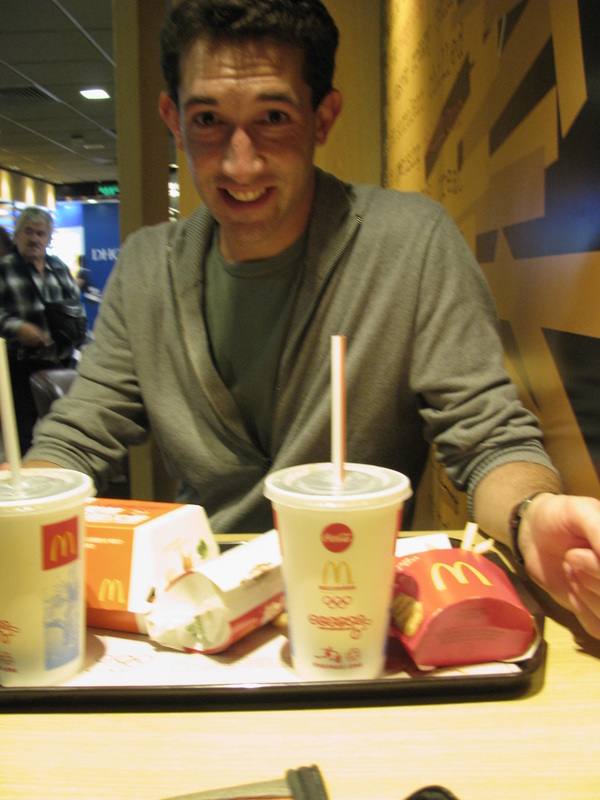
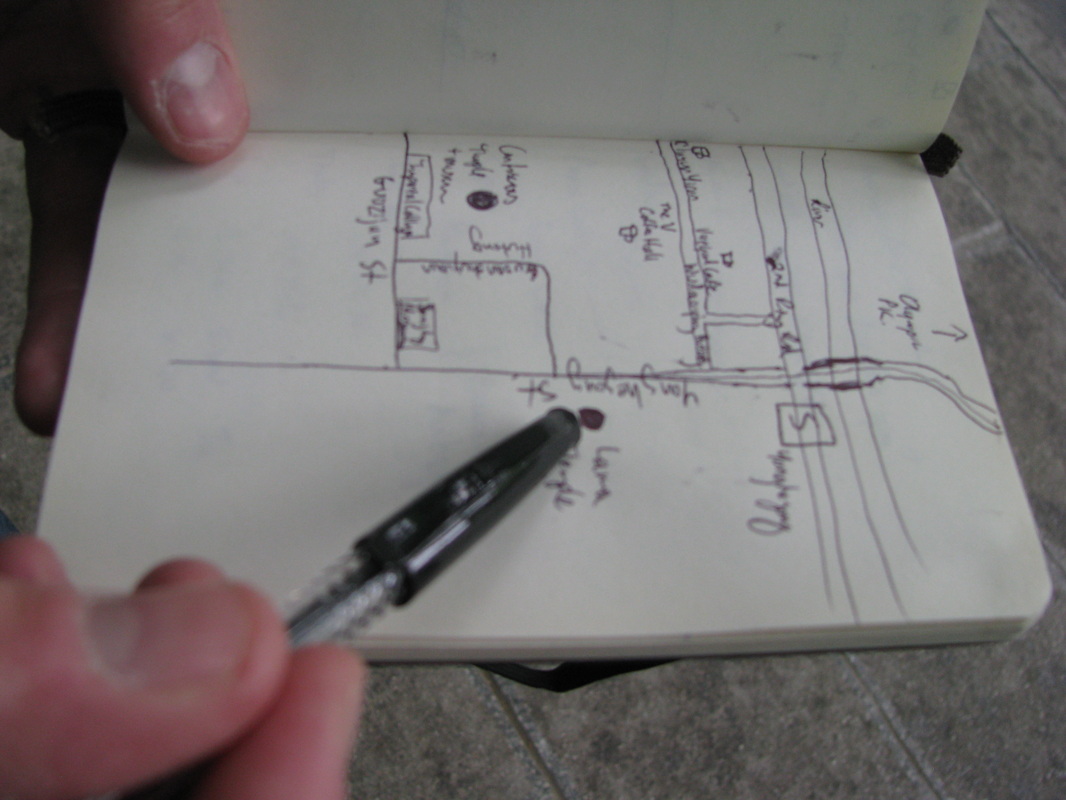

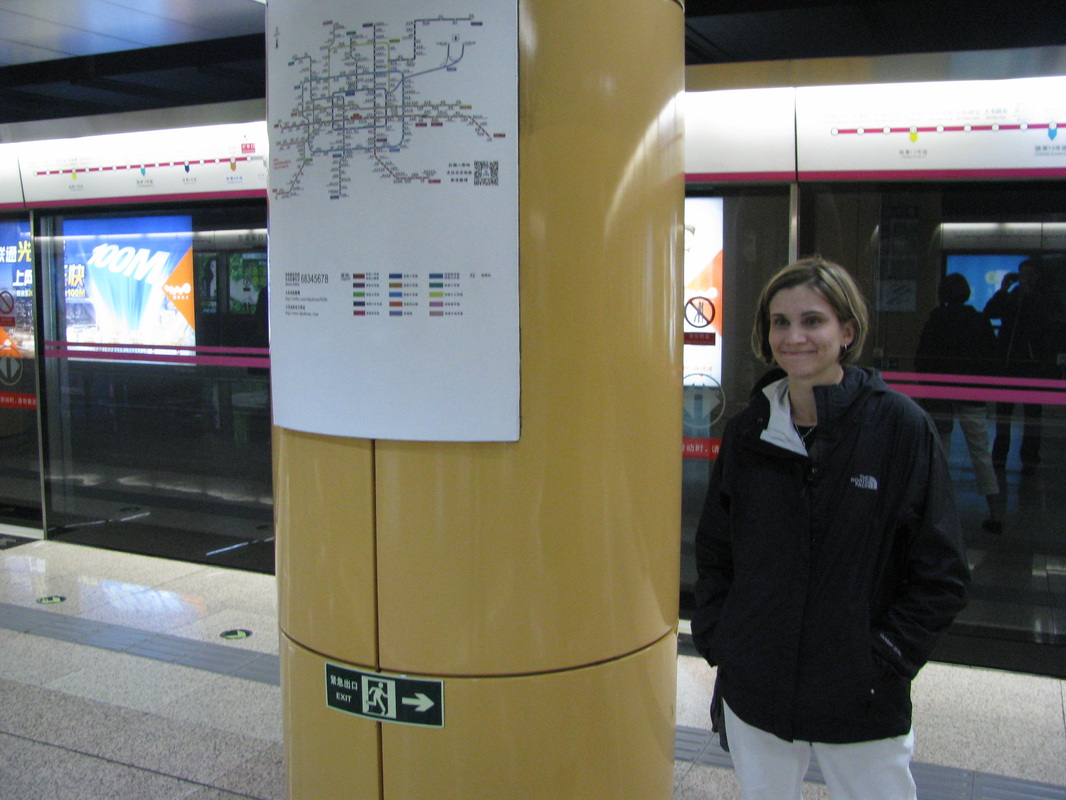
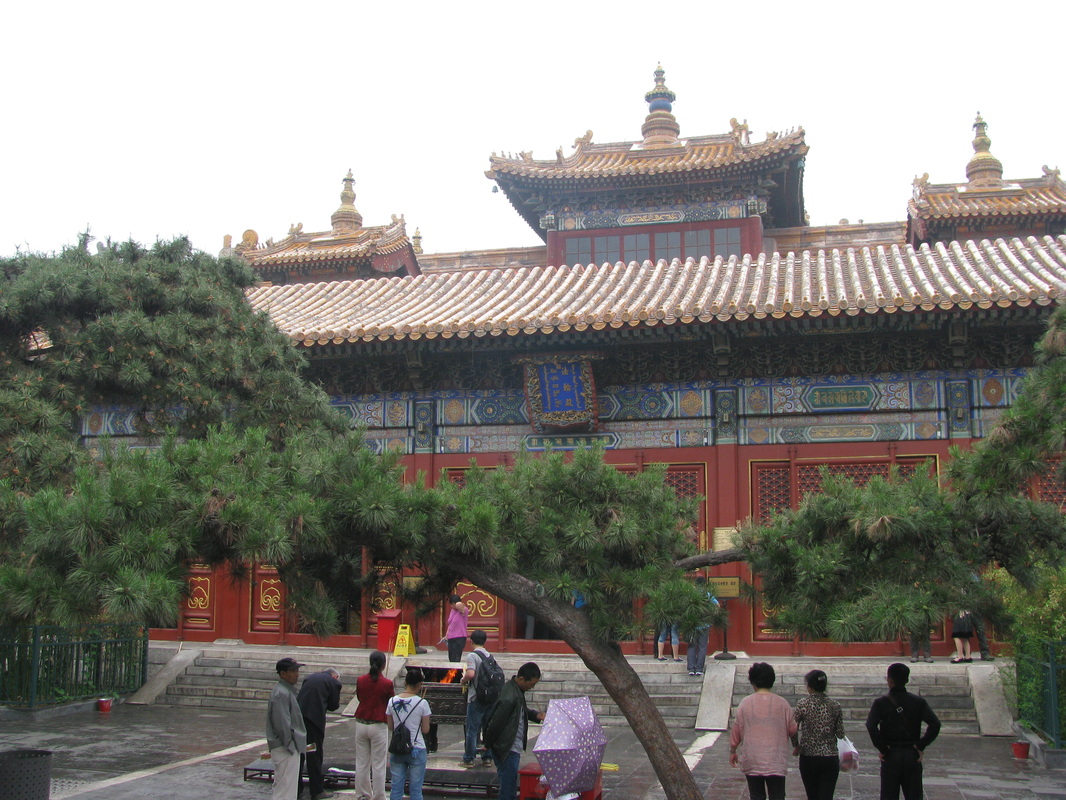
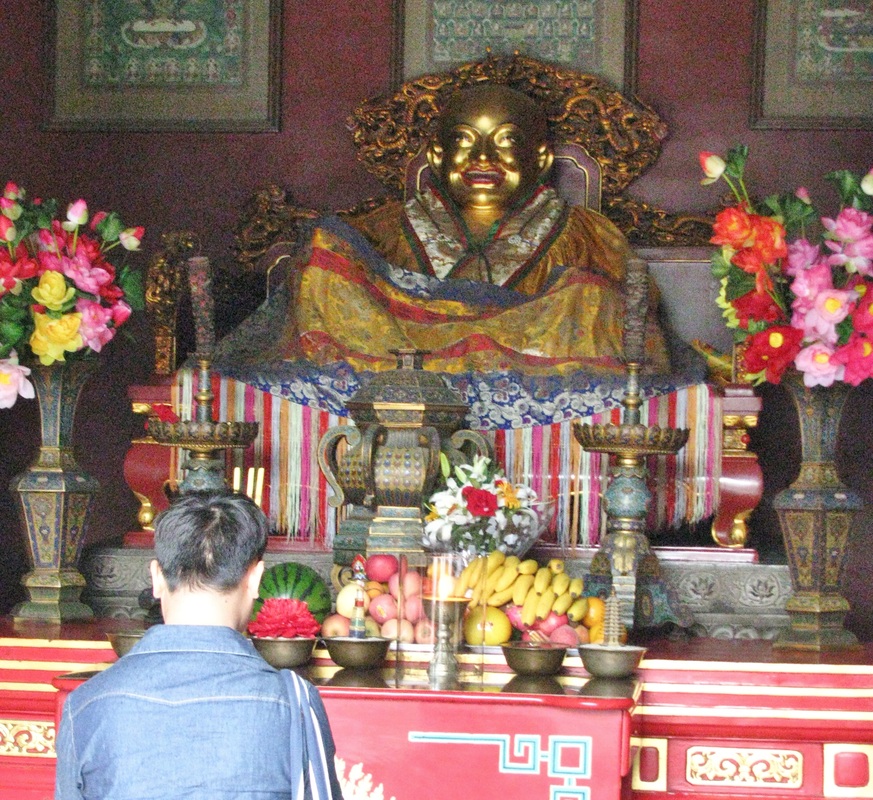

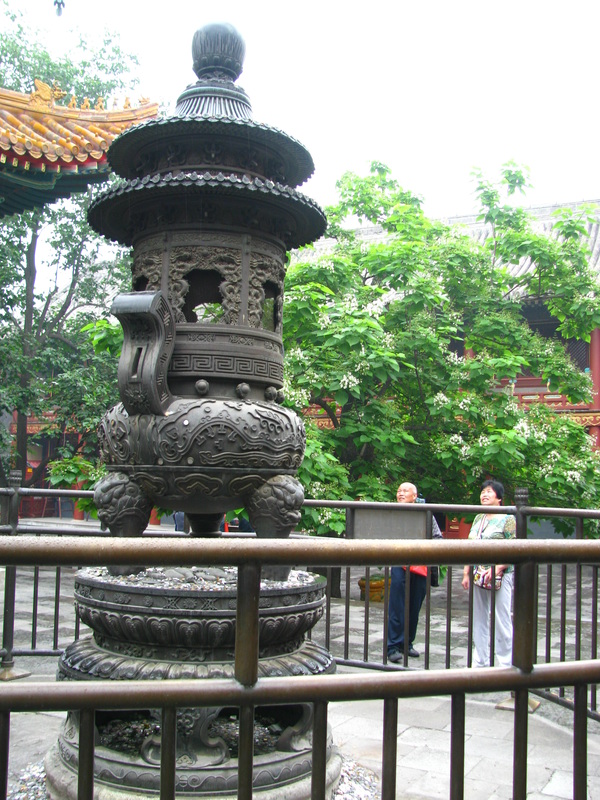
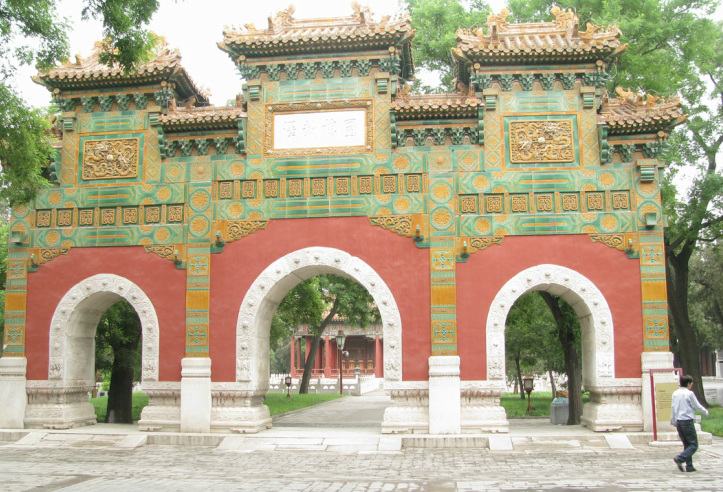
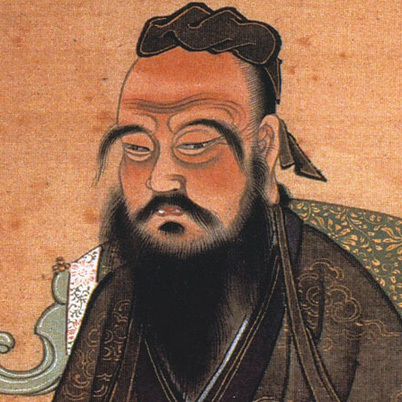


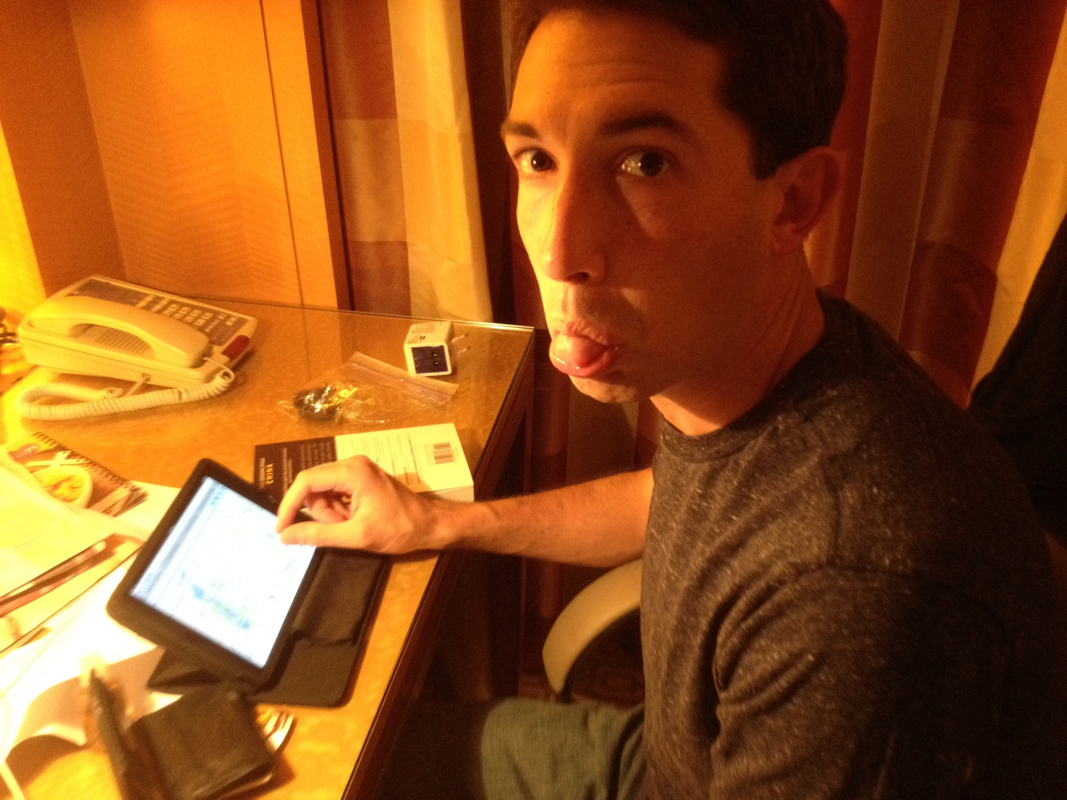
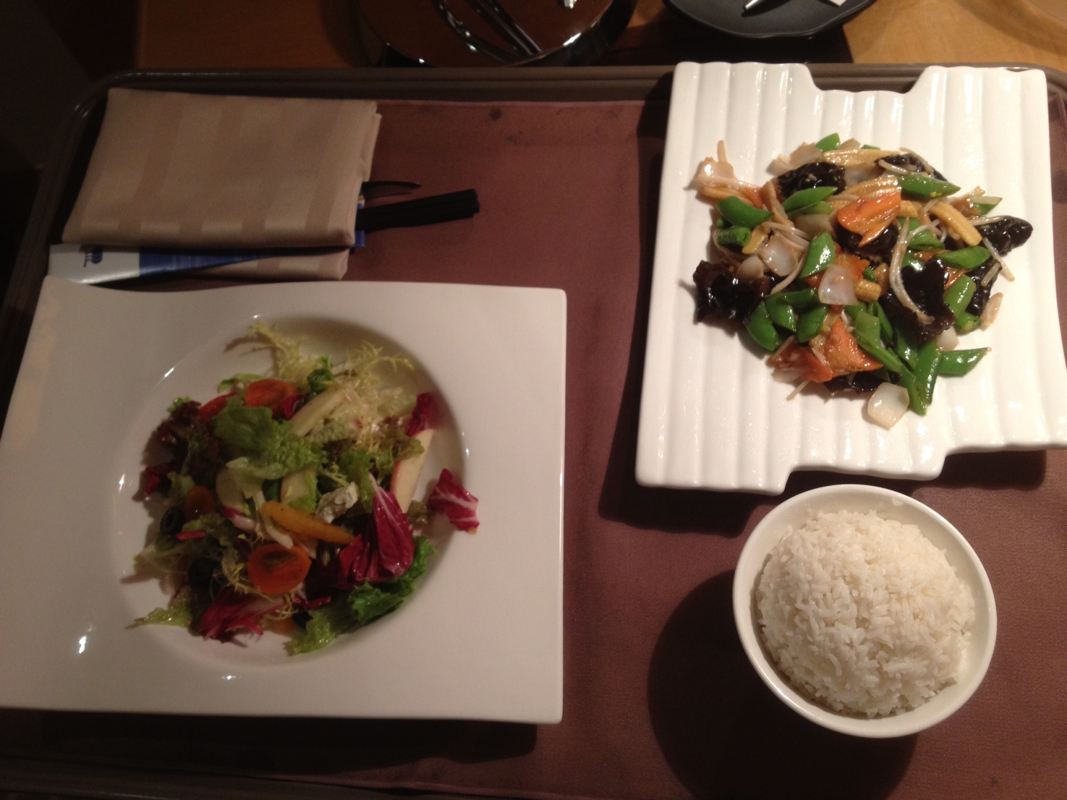
 RSS Feed
RSS Feed